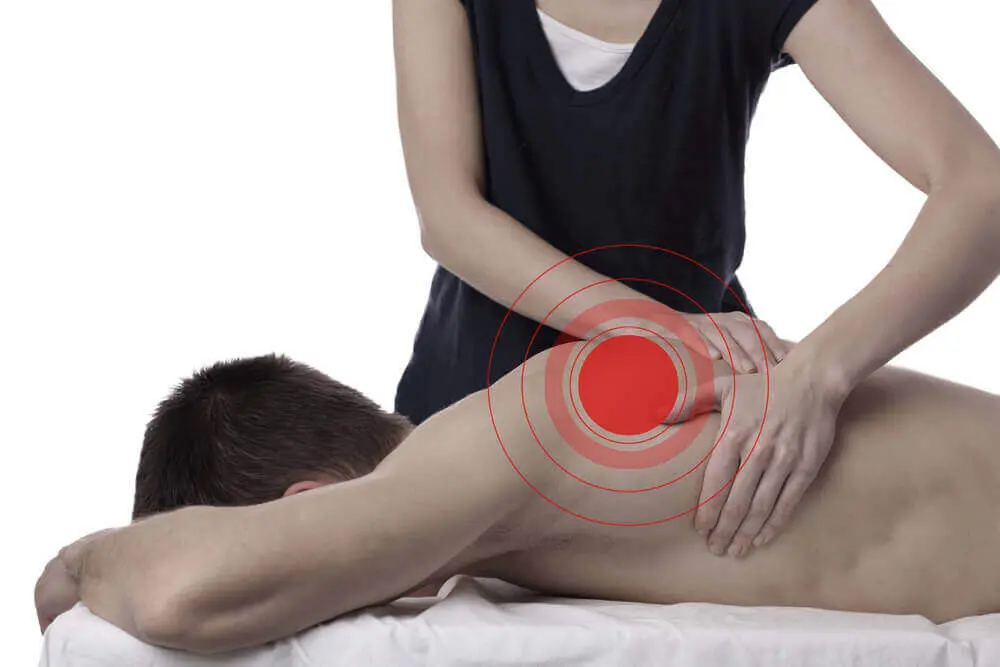Trigger point therapy or myotherapy, is a type of massage therapy services that focuses on the treatment of specific areas of the body known as trigger points. These are points of tension in the muscles that can cause pain and other symptoms, such as headaches, stiffness, and weakness is a massage technique.
Its used to relieve pain and tension in the muscles. Targeted discomfort alleviation using certain pressure points to launch agonizing knots in muscle mass. The massage therapist at Oakville Massage Therapy will use a variety of techniques, such as deep tissue massage and stretching, to target and release these trigger points.
This can help to relieve pain and improve the function of the muscles. It can be helpful for people who are dealing with chronic muscle pain, tension headaches, and other conditions that are related to trigger points in the muscles. It can also be beneficial for people who are recovering from injuries, or who are experiencing decreased mobility or flexibility. It can be performed as a standalone treatment or in conjunction with other forms of therapy, such as physical therapy or ostheopathic care.
Trigger points are small knots of muscle that form when muscle fibers become shortened or damaged. They can occur in any muscle in the body, but they are most commonly found in the neck, shoulders, and upper back.
Trigger points can be classified as either active or latent. Active trigger points are those that are causing pain or discomfort in the affected area, or referring pain to other areas of the body. Latent trigger points are those that are not currently causing pain, but may become active if left untreated.
Trigger points can be caused by a variety of factors, including overuse, muscle imbalances, poor posture, injury, and stress. They can cause pain and discomfort in the affected area, as well as refer pain to other areas of the body. For example, a trigger point in the shoulder may cause pain in the shoulder itself, as well as in the neck or arm.
Trigger points can be treated with a variety of techniques, including massage therapy, stretching, and range of motion exercises. It’s important to address trigger points as soon as they are identified in order to prevent them from becoming more chronic or difficult to treat.
Trigger Point Massage Therapy Benefits:
Trigger point therapy can have a number of benefits, including:
- Relief of muscle pain and tension: By releasing trigger points, trigger point therapy can help reduce muscle pain and tension. This can help improve mobility and flexibility in the affected muscles, as well as reduce the risk of injury.
- Improved range of motion: Stretching and range of motion exercises used in trigger point therapy can help improve flexibility and mobility in the affected muscles.
- Reduced risk of injury: By releasing muscle tension and improving flexibility, trigger point therapy can help reduce the risk of injury during physical activity.
- Improved posture: Trigger point therapy can help correct muscle imbalances and improve overall posture.
- Stress relief: Massage therapy in general can help reduce stress and promote relaxation, and trigger point therapy is no exception.
- Improved sleep: Massage therapy has been shown to improve sleep quality, and trigger point therapy may have similar effects.
It’s important to note that the benefits of trigger point therapy may vary depending on the individual and the specific condition being treated. It’s always a good idea to discuss the potential benefits and any potential risks with a healthcare provider before starting any new treatment.
Trigger Point Therapy Techniques:
There are a number of techniques that can be used in trigger point therapy to help release muscle tension and reduce pain. These techniques may include:
- Finger or thumb pressure: The therapist may use their fingers or thumb to apply pressure directly to the trigger point. This may be done using a circular motion or a sustained pressure.
- Elbow pressure: The therapist may use their elbow to apply pressure to the trigger point. This can be a more intense form of pressure, and is often used for deeper muscle tissues.
- Massage balls or foam rollers: The therapist may use a massage ball or foam roller to apply pressure to the trigger point. This can be a more self-directed form of treatment, as the client can use the ball or roller to apply pressure to their own muscles.
- Stretching and range of motion exercises: The therapist may use stretching and range of motion exercises to help improve flexibility and mobility in the affected muscles.
- Dry needling: In this technique, the therapist uses thin needles to stimulate the trigger point. This technique is not commonly used in trigger point therapy, but may be used in some cases.
The specific techniques used in trigger point therapy may vary depending on the location and severity of the trigger points, as well as the preferences and comfort level of the client. It’s important to discuss the treatment plan with the therapist and to let them know if any techniques are uncomfortable or cause discomfort.

